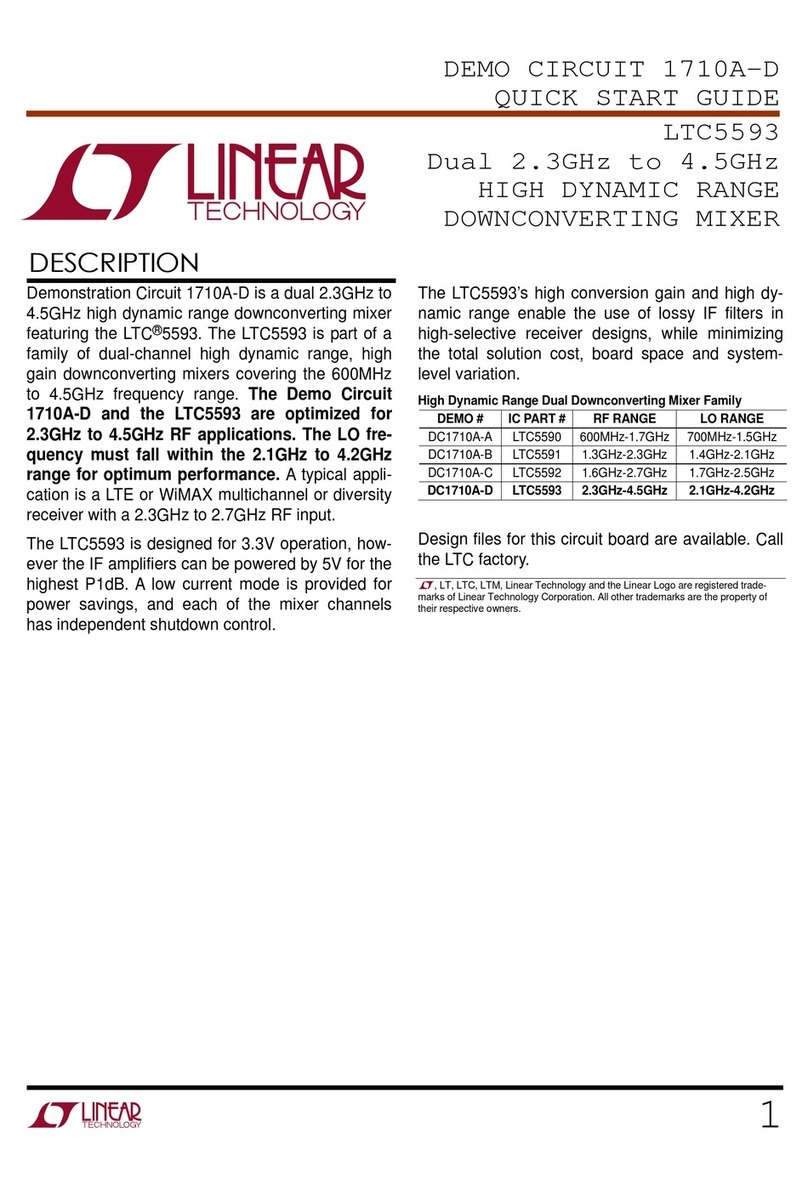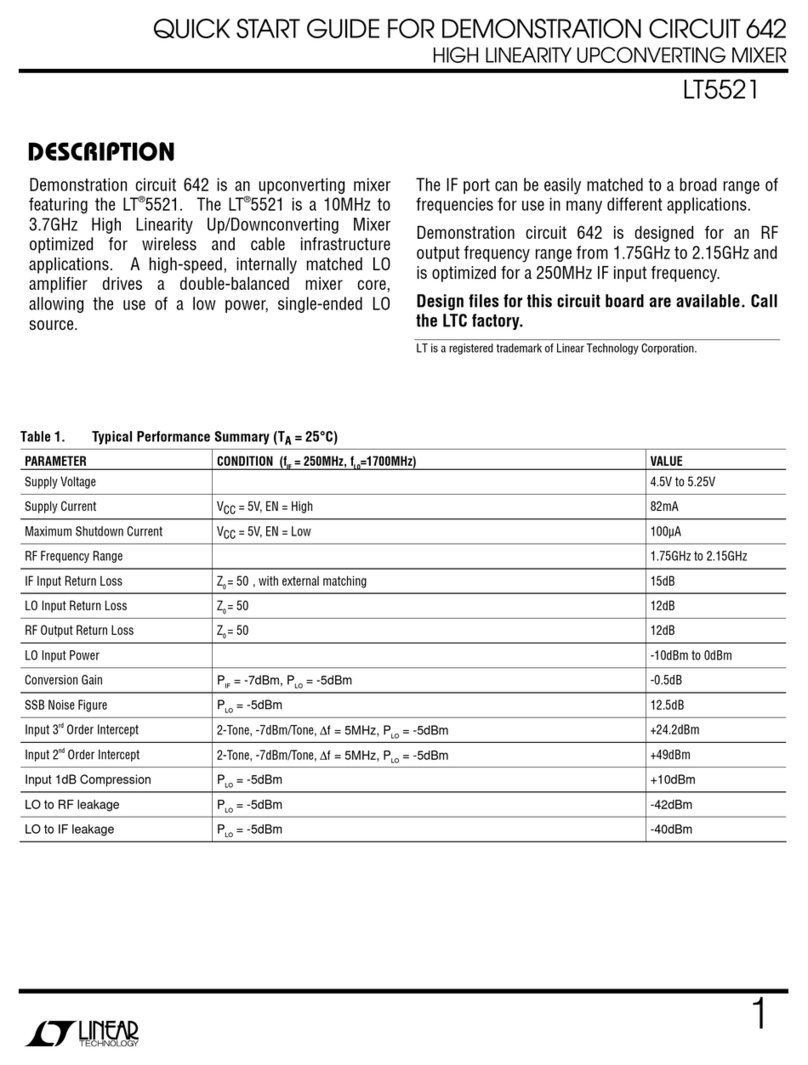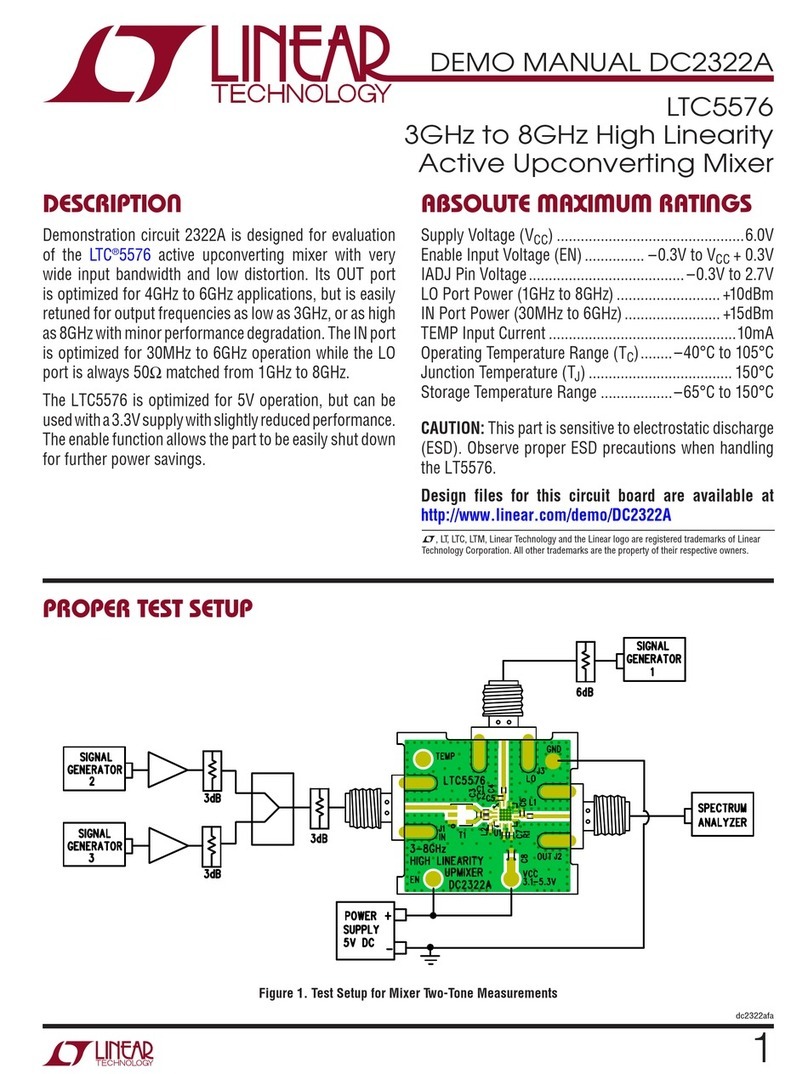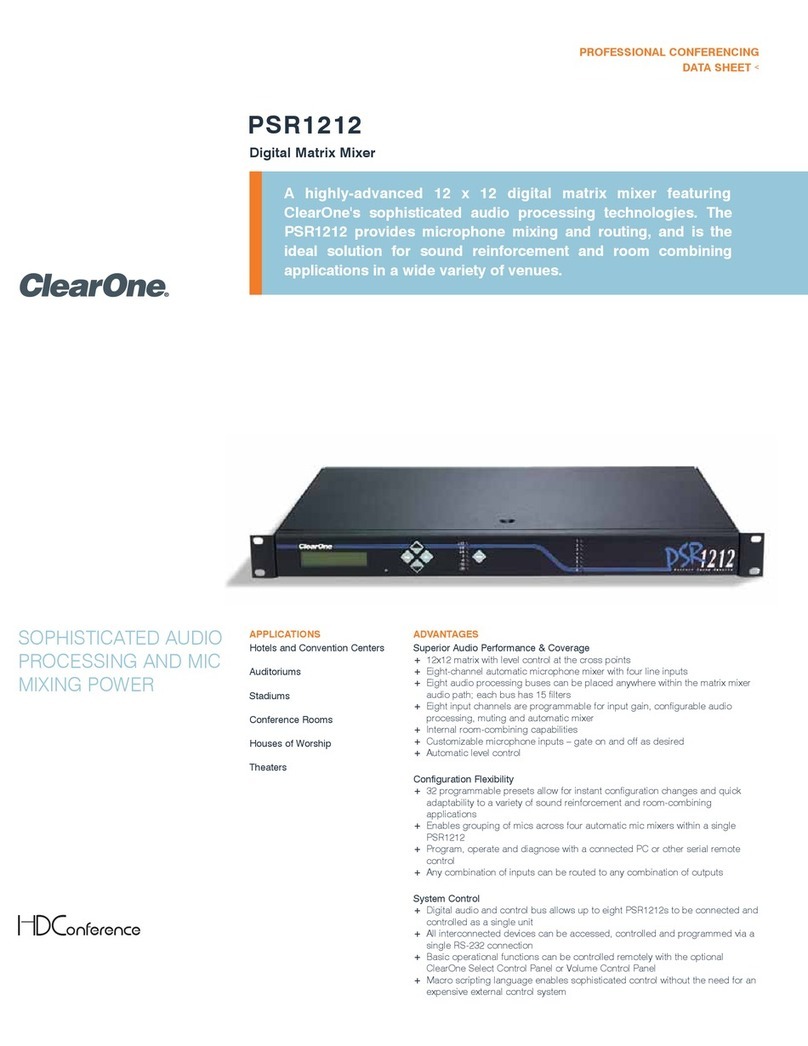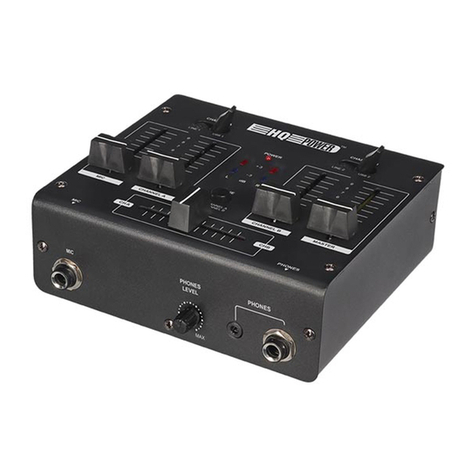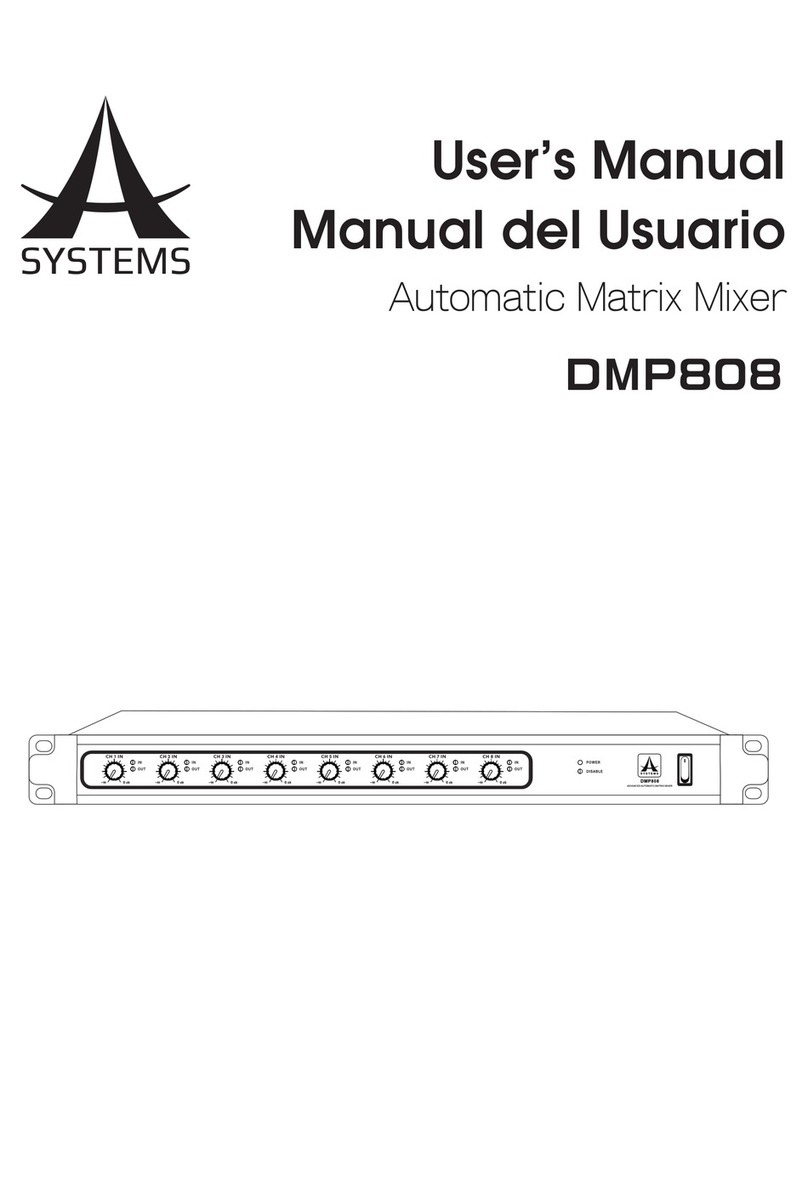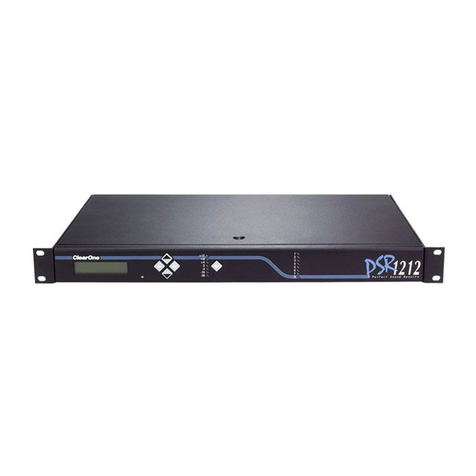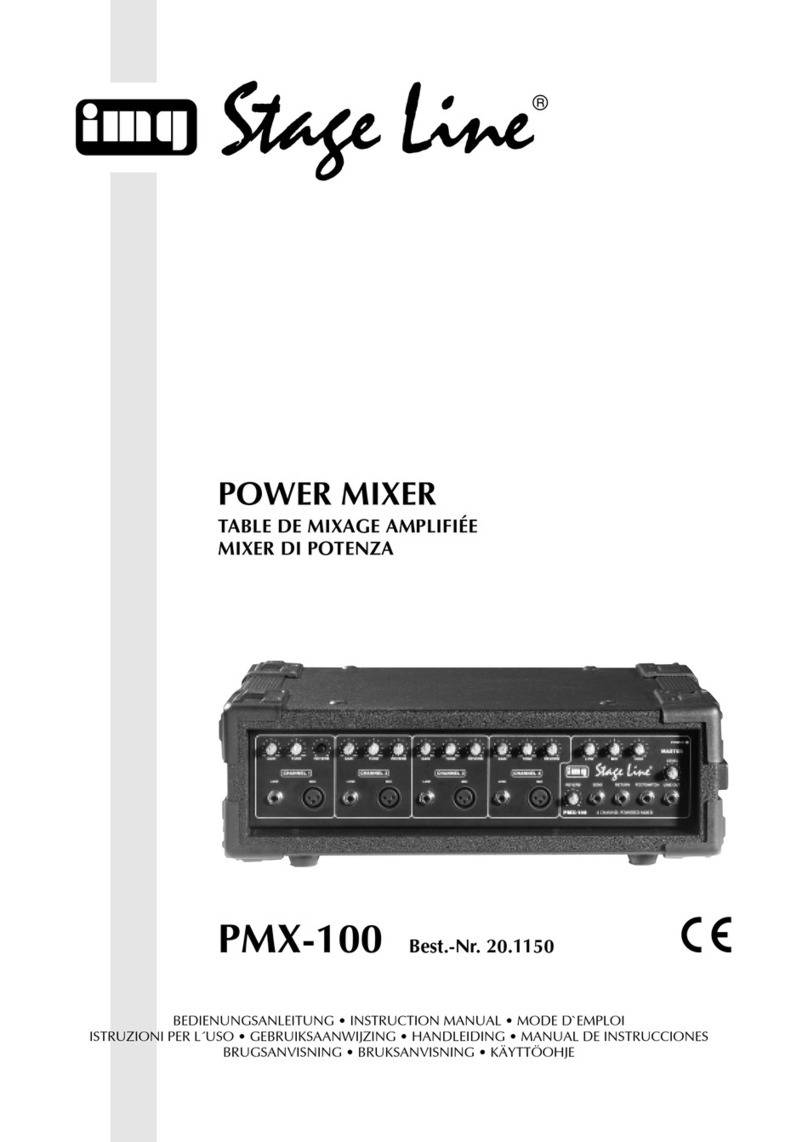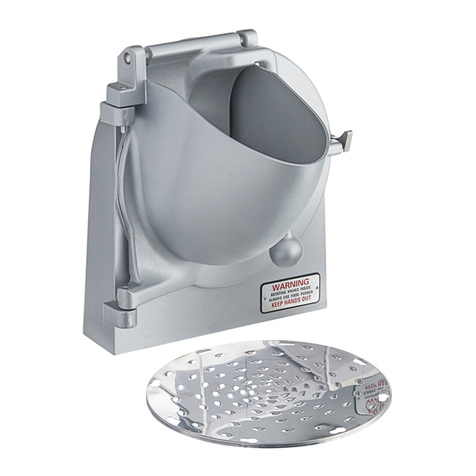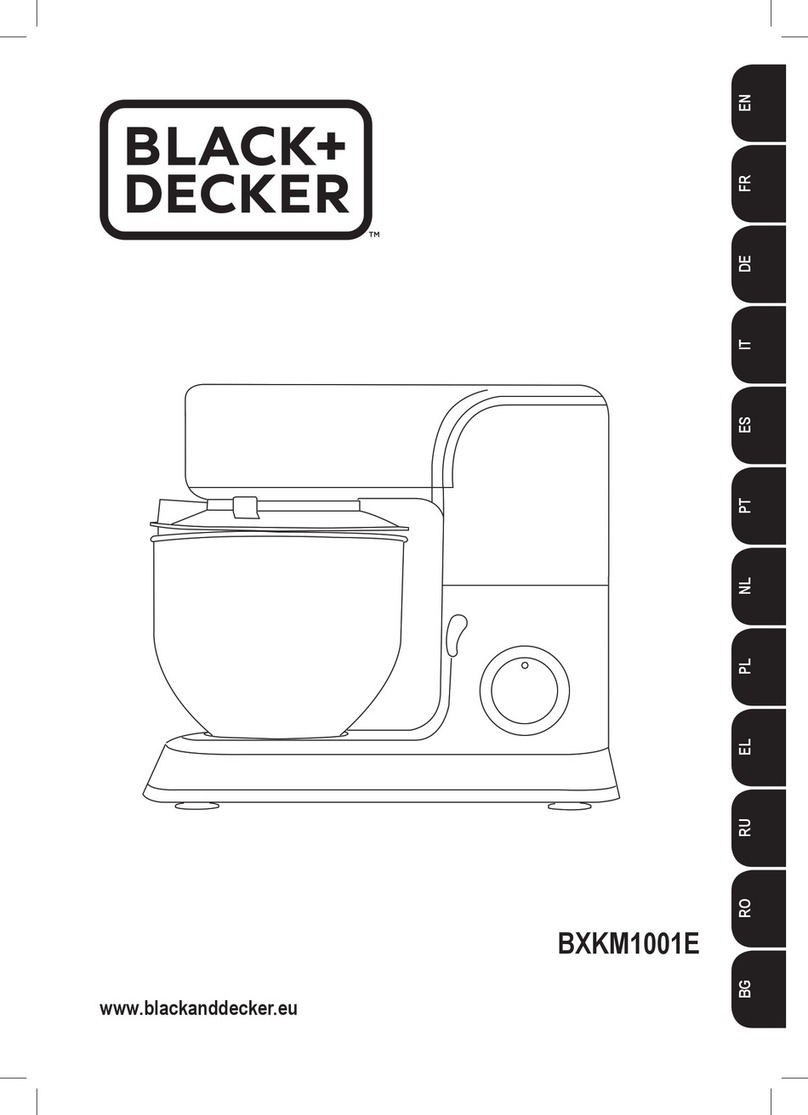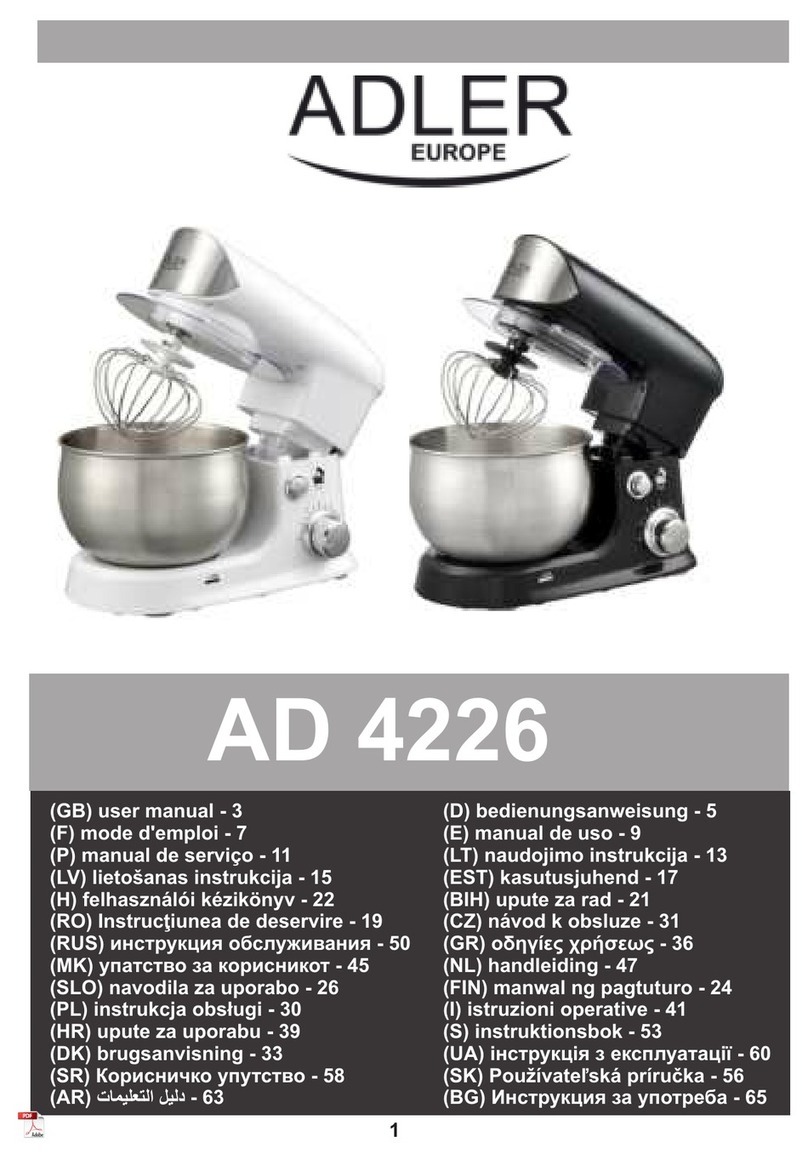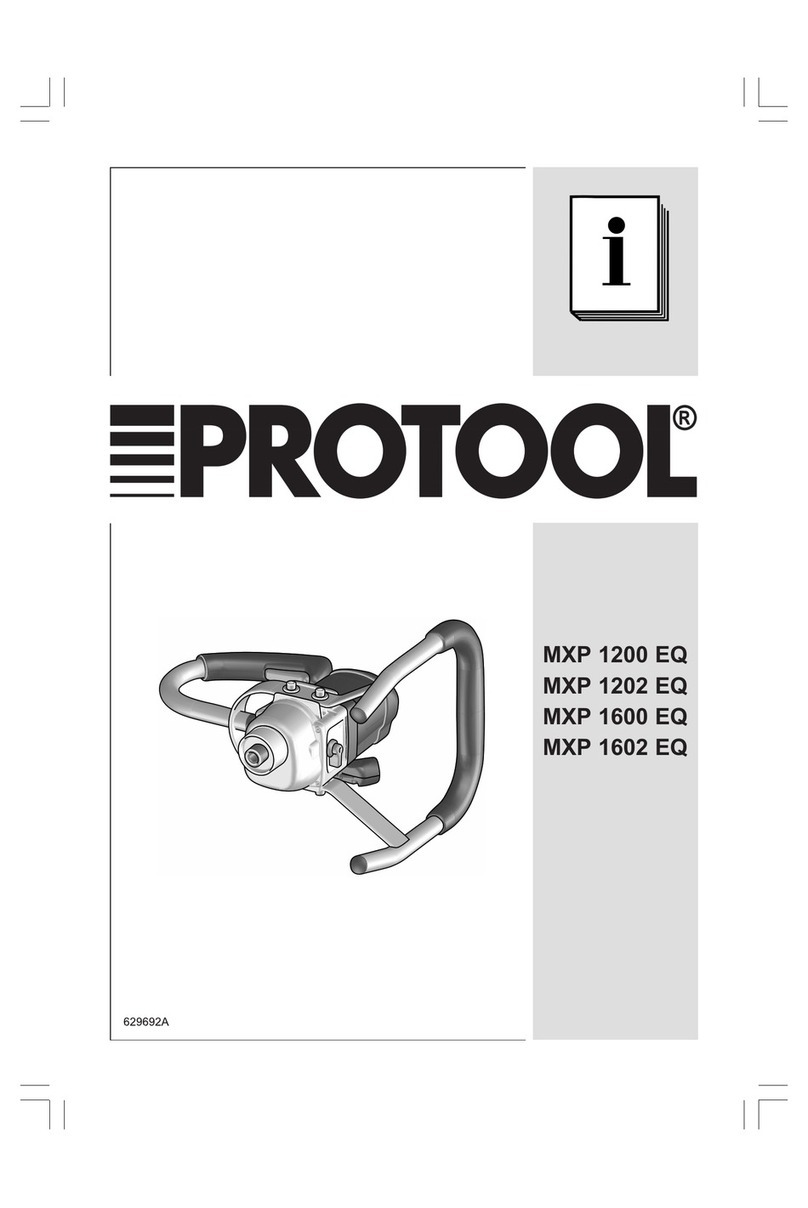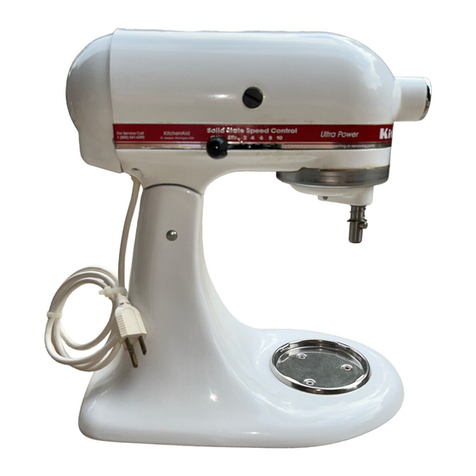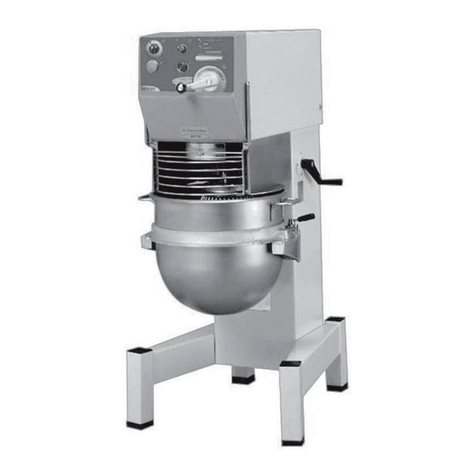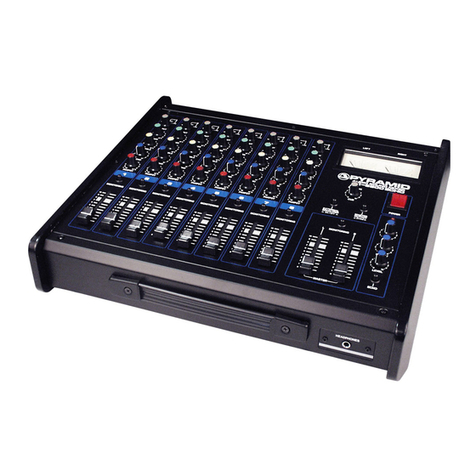Linear Technology 1233A Series User manual

QUICK START GUIDE FOR DEMONSTRATION CIRCUIT 1233A-X
1.5GHZ TO 3.8GHZ HIGH LINEARITY UPCONVERTING MIXER
1
LT5579
DESCRIPTION
Demonstration circuit 1233A-x is a high linearity up-
converting mixer featuring the LT5579.
The LT
®
5579 is a high performance upconverting mixer
IC optimized for output frequencies in the 1.5GHz to
3.8GHz range. It features single-ended LO input and RF
output ports to simplify board layout and to reduce sys-
tem cost.
The LT5579 offers a superior alternative to passive mix-
ers. Unlike passive mixers which have conversion loss
and require high LO drive levels, the LT5579 delivers
conversion gain at significantly lower LO input levels
and is less sensitive to LO power level variations. Only
-1dBm of LO power is needed, and the balanced design
results in low LO signal leakage to the RF output. The
lower LO drive level requirements, combined with the
excellent LO leakage performance, translate into lower
LO signal contamination of the output signal.
The DC1233A-x series of demonstration circuits are
designed for evaluating the LT5579 IC at several com-
mon frequency ranges:
VERSION APPLICATION IF INPUT LO INPUT RF OUTPUT
-
A
WiMAX
456MHz
Low
-
side
3.6GHz
-
B
W
iMAX
456MHz
High
-
side
2.6GHz
-
C
UMTS
240MHz
High
-
side
2.14GHz
-
D
PCS
240MHz
Low
-
side
1.95GHz
Demonstration circuit 1233A-x can be easily optimized
for operations at other frequencies. Refer to the “Appli-
cation Note” section and the LT5579 data sheet for de-
tails.
Design files for this circuit board are available. Call
the LTC factory.
, LT, LTC, and LTM are registered trademarks of Linear Technology Corp.
All other trademarks are the property of their respective owners.
Table 1. Typical Demo Circuit Performance Summary (T
A
= 25°C, V
CC
= 3.3V, P
IF
= -5dBm (-5dBm/tone for 2-tone tests,
∆
∆∆
∆
f = 1MHz),
P
LO
= -1dBm, unless otherwise noted. Low side LO for 1950MHz and 3600MHz. High side LO for 2140MHz and 2600MHz.)
PARAMETER CONDITIONS TYPICAL PERFORMANCE
Supply Voltage
3.3V
Supply Current
226mA
LO Input Frequency Range
1.1GHz to 4GHz
LO Input Power
-
5 to +2dBm
1233A
-
A
1233A
-
B
1233A
-
C
1233A
-
D
WiMAX 3.6GHz
WiMAX 2.6GHz
UMTS
PCS
IF Input Frequency Range
12dB Return Loss, LO applied
330 to 505MHz
330 to 505MHz
174 to 263MHz
174 to 263MHz
RF Output Frequency Range
10dB Return Loss,
LO applied
3170 to 4100MHz
2260 to 2780MHz
2035 to 2285MHz
1840 to 2020MHz
Conversion Gain
-
0.5dB
1.3dB
2.6dB
1.9dB
Conversion Gain vs. Temperature
T
A
=
-
40°C to 85°C
-
0.027dB/°C
-
0.027dB/°C
-
0.020dB/°C
-
0.020dB/°C
Output 3rd Order Intercept
23.2dBm
26.2dBm
27.3dBm
28dBm
Output 2nd Order Intercept
54dBm
45dBm
42dBm
40dBm
Single Sideband Noise Figure
12dB
12dB
9.9dB
9.9dB
Output Noise Floor
P
OUT
=
-
5dBm
-
155.5dBm/Hz
-
157.5dBm/Hz
-
158.1dBm/Hz
-
158.1dBm/Hz
Output 1dB Compression
10.7dBm
13.7dBm
13
.9dBm
13.6dBm
IF to LO Isolation
73dB
74dB
81dB
80dB
LO to IF Leakage
-
22dBm
-
26dBm
-
28dBm
-
25dBm
LO to RF Leakage
-
35dBm
-
36dBm
-
35dBm
-
34dBm

QUICK START GUIDE FOR DEMONSTRATION CIRCUIT 1233A-X
1.5GHZ TO 3.8GHZ HIGH LINEARITY UPCONVERTING MIXER
2
APPLICATION NOTE
ABSOLUTE MAXIMUM RATINGS
Supply Voltage......................................................3.6V
LO Input Power.............................................. +10dBm
LO Input DC Voltage .................... -0.3V to V
CC
+ 0.3V
RF Output DC Current........................................ 60mA
IF Input Power (Differential).......................... +13dBm
IF
+
, IF
-
DC Currents ........................................... 60mA
T
JMAX
.................................................................150°C
Operating Temperature Range.............. -40°C to 85°C
Storage Temperature Range............... -65°C to 150°C
IF INPUT INTERFACE
The standard demonstration circuit 1233A-x can be re-
configured for other IF input frequencies. The details of
the matching circuit are omitted in this guide, since the
LT5579 datasheet presents in depth explanations and
the IC’s IF input differential impedance. Matching com-
ponent values for several common IF input frequencies
are listed in Table 2. Refer to the demonstration circuit
schematic in Figure 3.
Table 2. IF Input Component Values
IF Freq.
(MHz)
C1,C2
(pF)
C9 (1)
(pF)
C3
(pF)
TL1,TL2
(3)
L1,L2
(nH)
R1,R2
(
Ω
ΩΩ
Ω
)
70 1000 120 (2) 4.7nH 100 9.1
140 1000 120 (2) Z
0
=70
Ω
100 9.1
240 82 33 (2) Z
0
=70
Ω
40 11
450 33 33 (2) Z
0
=70
Ω
40 11
NOTE:
1.
Center of C9 is 3mm from the edge of the IC package
for all cases.
2.
C3 is a small-valued capacitor used to improve the
LO-RF leakage in some applications, and it has little
effect on impedance matching. C3’s value and loca-
tion depend on LO and RF frequencies and are de-
termined experimentally. In certain instances, two
common-mode capacitors to ground instead of one
single differential capacitor may provide better leak-
age suppression.
3.
The 70
Ω
microstrip transmission line TL1 and TL2
provide inductances required for matching. At lower
frequencies, external inductors are necessary.
4.
R1 and R2 set the DC current in the mixer core to the
optimum level of 50mA per side. Their values should
be well matched for best LO leakage performance.
0.1% tolerance is recommended.
5.
L1 and L2 reduce the loading effect of R1 and R2.
Their self-resonant frequency should be at least sev-
eral times the IF frequency. High quality wire-wound
type inductors are recommended. The DC resis-
tances of L1 and L2 need to be accounted for in the
selection of R1 and R2.
LO INPUT INTERFACE
The LT5579’s LO input port is internally matched from
1.1GHz to 4GHz, with a minimum return loss across
this range of about 9dB at 2.3GHz. External matching
should be used for lower LO frequencies for best per-
formance. Refer to the LT5579 datasheet for more in-
formation and impedance data.
RF OUTPUT INTERFACE
The LT5579 utilizes an internal RF transformer to step
down the mixer core output impedance to simply RF
output matching. Matching component values for sev-
eral common RF output frequencies are listed in Table
3. High quality precision microwave capacitors, such
as the AVX Accu-p series, should be used for C8 to
minimize parasitics.
Table 3. RF Output Component Values
RF Frequency (MHz) C8 (pF) L3 (nH)
1650 1.5 6.8
1750 1.2 6.8
1950 1 4.7
2140 0.45 3.9
2600 - 1.0
3600 0.7 0
Ω

QUICK START GUIDE FOR DEMONSTRATION CIRCUIT 1233A-X
1.5GHZ TO 3.8GHZ HIGH LINEARITY UPCONVERTING MIXER
3
TEST EQUIPMENT AND SETUP
The LT5579 is a high linearity upconverting mixer IC.
Accuracy of its performance measurement is highly
dependent on equipment setup and measurement tech-
nique. The following precautions are recommended:
1.
Use high performance signal generators with low
harmonic output. Otherwise, utilize low-pass fil-
ters at the signal generator outputs to suppress
higher-order harmonics.
2.
Turn off the signal generators’ output automatic-
level-control (ALC). This prevents conflict in
power-level control between the two sources,
which can introduce intermodulation products.
3.
High quality combiners that provide broadband
50Ω
ΩΩ
Ωtermination on all ports and have good port-
to-port isolation should be used. Attenuators on
the outputs of the signal generators are recom-
mended to further improve source isolation to
prevent the sources from modulating each other
and generating intermodulation products.
4.
Beware of the signal generators’, and if used, source
amplifiers’ 1dB compression point. When driven
close to their 1dB compression point, the sources
and amplifiers may introduce additional distortions.
5.
The level of intermodulation products from the input
sources needs to be much lower than the products
expected to be generated by the DUT. In general, IM
products measured at the input connector to the DUT
should be 25dB or more below the expected level at
the DUT output.
6.
If possible, use small attenuator pads with good
VSWR on the demonstration circuit’s input and
output ports to improve source and load match to
reduce reflections, which may degrade measure-
ment accuracy.
7.
Use narrow resolution bandwidth (RBW) and en-
gage video averaging on the spectrum analyzer to
lower the displayed average noise level (DANL) in
order to improve sensitivity and to increase dy-
namic range. The trade off is increased sweep
time.
8.
Spectrum analyzers can produce significant internal
distortion products if they are overdriven. Generally,
spectrum analyzers are designed to operate at their
best with about –30dBm to -40dBm at their input fil-
ter or preselector.
Sufficient spectrum analyzer in-
put attenuation should be used to avoid saturating
the instrument, but too much attenuation reduces
sensitivity and dynamic range.
9.
Before performing measurements on the demo
circuit, the system performance should be evalu-
ated to ensure that: 1) clean input signal can be
produced, 2) the spectrum analyzer’s internal dis-
tortion is minimized, 3) the spectrum analyzer has
enough dynamic range and sensitivity, and 4) the
system is accurately calibrated for power and fre-
quency.

QUICK START GUIDE FOR DEMONSTRATION CIRCUIT 1233A-X
1.5GHZ TO 3.8GHZ HIGH LINEARITY UPCONVERTING MIXER
4
QUICK START PROCEDURE
Demonstration circuit 1233A-x is easy to set up to
evaluate the performance of the LT5579. Refer to
Figure 1 and Figure 2 for proper measurement equip-
ment connections and follow the procedure below:
NOTE:
Care should be taken to never exceed absolute
maximum input ratings.
RETURN LOSS MEASUREMENTS
1.
Configure the Network Analyzer for return loss
measurement, set appropriate frequency range,
and set the test signal to –5dBm.
2.
Calibrate the Network Analyzer.
3.
Connect all test equipment as shown in
Figure 1
.
4.
Apply 3.3V DC supply power, and verify that the
current consumption is approximately 226mA in
the presence of LO signal. The supply voltage
should be confirmed at the demo board V
CC
and
GND terminals to account for ohmic losses due to
the high current.
5.
With the LO signal applied, and the unused demo
board port terminated in 50Ω, measure return
loss of the IF input and RF output ports.
6.
Set the test signal to –1dBm, and re-calibrate the
Network Analyzer.
7.
Terminate the IF input and RF output ports in 50Ω.
Measure return loss of the LO input port.
RF PERFORMANCE MEASUREMENTS
1.
Connect all test equipment as shown in Figure 2
.
2.
Set the LO source (Signal Generator 1) to provide
a -1dBm, CW signal to the demo board LO input
port at appropriate LO frequency.
3.
Set the IF sources (Signal Generators 2 and 3) to
provide two -5dBm CW signals, 1MHz apart, to
the demo board IF input port at the appropriate IF
frequency.
4.
Measure the resulting RF output on the Spectrum
Analyzer:
a.
The wanted two-tone RF output signals are at:
f
OUT(1,2)
= f
LO
+ f
IF(1,2)
for low-side LO, and
f
OUT(1,2)
= f
LO
– f
IF(1,2)
for high-side LO
b.
The 2nd order intermodulation product which is
closest to the wanted RF signals is used to cal-
culate the Output 2nd Order Intercept:
f
IM2
= f
LO
+ (f
IF1
+ f
IF2
) for low-side LO, and
f
IM2
= f
LO
- (f
IF1
+ f
IF2
) for high-side LO
c.
Similarly, use the 3rd order intermodulation
products which are closest to the wanted RF
signals to calculate the Output 3rd Order Inter-
cept:
f
IM3,1
= f
LO
+ f
IF1
- ∆
IF
, and
f
IM3,2
= f
LO
+ f
IF2
+ ∆
IF
for low-side LO, and
f
IM3,1
= f
LO
- f
IF1
+ ∆
IF
, and
f
IM3,2
= f
LO
- f
IF2
- ∆
IF
for high-side LO
Where
∆
IF
= f
IF2
– f
IF1
.
5.
Calculate Output 2nd and 3rd Order Intercepts:
OIP2 = 2•P
OUT
– P
IM2
OIP3 = (3•P
OUT
– P
IM3
) / 2
Where P
OUT
is the lowest power level of the two
wanted output signals at either f
OUT1
or f
OUT2
, P
IM2
is
the 2nd order intermodulation product at f
IM2
, and
P
IM3
is the largest 3rd order intermodulation product
at either f
IM3,1
or f
IM3,2
. All units are in dBm.
Alternatively, the output intercept can be calculated
using the power difference between the desired out-
put signal and the intermodulation products:
OIP2 =
∆
IM2
+ P
OUT
OIP3 = (∆
IM3
)/2 + P
OUT
Where
∆
IM(2,3)
= P
OUT
– P
IM(2,3)
.
6.
Turn off one of the IF signal generators, and measure
Conversion Gain, IF to LO isolation, LO to IF and LO
to RF leakages, and Input 1dB compression point.

QUICK START GUIDE FOR DEMONSTRATION CIRCUIT 1233A-X
1.5GHZ TO 3.8GHZ HIGH LINEARITY UPCONVERTING MIXER
5
Figure 1. Proper Equipment Setup for Return Loss Measurements
Figure 2. Proper Equipment Setup for RF Performance Measurements

QUICK START GUIDE FOR DEMONSTRATION CIRCUIT 1233A-X
1.5GHZ TO 3.8GHZ HIGH LINEARITY UPCONVERTING MIXER
6
Figure 3. Demonstration Circuit Schematic
This manual suits for next models
5
Table of contents
Other Linear Technology Mixer manuals

